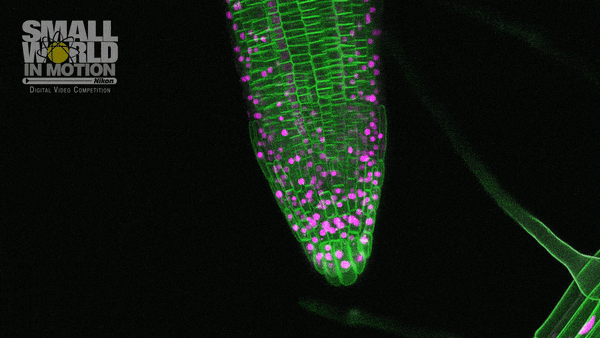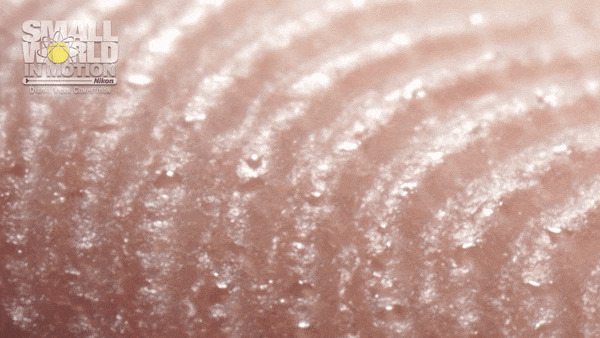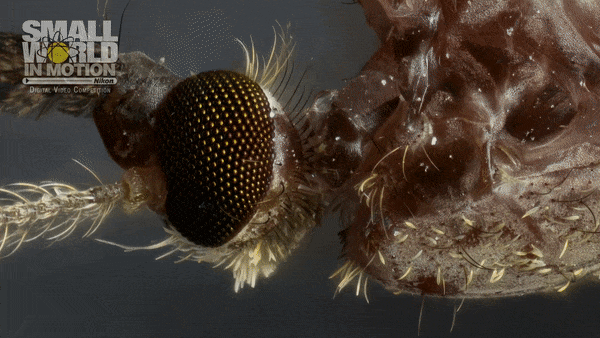Prizewinning Videos Show It's a Small World After All
Those breathtaking moments — and many more — are spectacularly displayed in video clips that were recently honored by the Nikon Small World in Motion Digital Video Competition, an annual contest that celebrates movies and time-lapse sequences shot through an optical-light microscope.
This year's top prize went to Daniel von Wangenheim, a researcher with the Institute of Science and Technology Austria, Nikon announced on Sept. 21 in a statement. He garnered first place for a time-lapse video shot over 17 hours, displaying a root tip's growth of about 0.2 inches (4 millimeters) in a flowering plant called Arabidopsis thaliana. [Magnificent Microphotography: 50 Tiny Wonders]
The contest launched in 2011 as a companion to the Nikon Small World Photomicrography Competition, and it awards microscopy video content for its artistry, its technical proficiency and the quality of the information it shares about the natural world, according to Nikon.
Von Wangenheim and his colleagues shot their video of the growing root as part of their research investigating plants' responses to gravity. They tipped the microscope on its side and rotated the plant on a platform, yet their footage showed that the root always angled downward, yielding to gravity's pull as it grew, Nikon representatives reported.

The second-place winner, video producer Tsutomu Tomita, took a closer look at droplets of perspiration emerging from a magnified human fingertip. And the third-place winner — Satoshi Nishimura, a professor at Jichi Medical University in Shimotsuke, Japan — revealed the burst of activity in the cells of a mouse's body after an injury, showing the first stages of how bodies heal themselves, with the formation of a blood clot.

Nikon announced five prizewinners and 23 honorable mentions. The submissions were as diverse as they were arresting, showing a pinworm parasite depositing its eggs, electrical signals traveling between nerve cells and crystal formation in medicine used for wart removal.

But all this footage isn't just beautiful to look at. It also offers rare glimpses into scientific investigations exploring life's processes — even at the cellular level — and hints at the exciting discoveries scientists can make when they peer through a microscope's lens.
Sign up for the Live Science daily newsletter now
Get the world’s most fascinating discoveries delivered straight to your inbox.
"I like to show people the beauty of our research, and this competition is a great platform to give insight into what we and other scientists are doing," von Wangenheim said in the statement.
"Sharing this insight beyond the scientific community is very important and can also help inspire young people to explore science," he added.
Original article on Live Science.

Mindy Weisberger is an editor at Scholastic and a former Live Science channel editor and senior writer. She has reported on general science, covering climate change, paleontology, biology and space. Mindy studied film at Columbia University; prior to Live Science she produced, wrote and directed media for the American Museum of Natural History in New York City. Her videos about dinosaurs, astrophysics, biodiversity and evolution appear in museums and science centers worldwide, earning awards such as the CINE Golden Eagle and the Communicator Award of Excellence. Her writing has also appeared in Scientific American, The Washington Post and How It Works Magazine. Her book "Rise of the Zombie Bugs: The Surprising Science of Parasitic Mind Control" will be published in spring 2025 by Johns Hopkins University Press.









